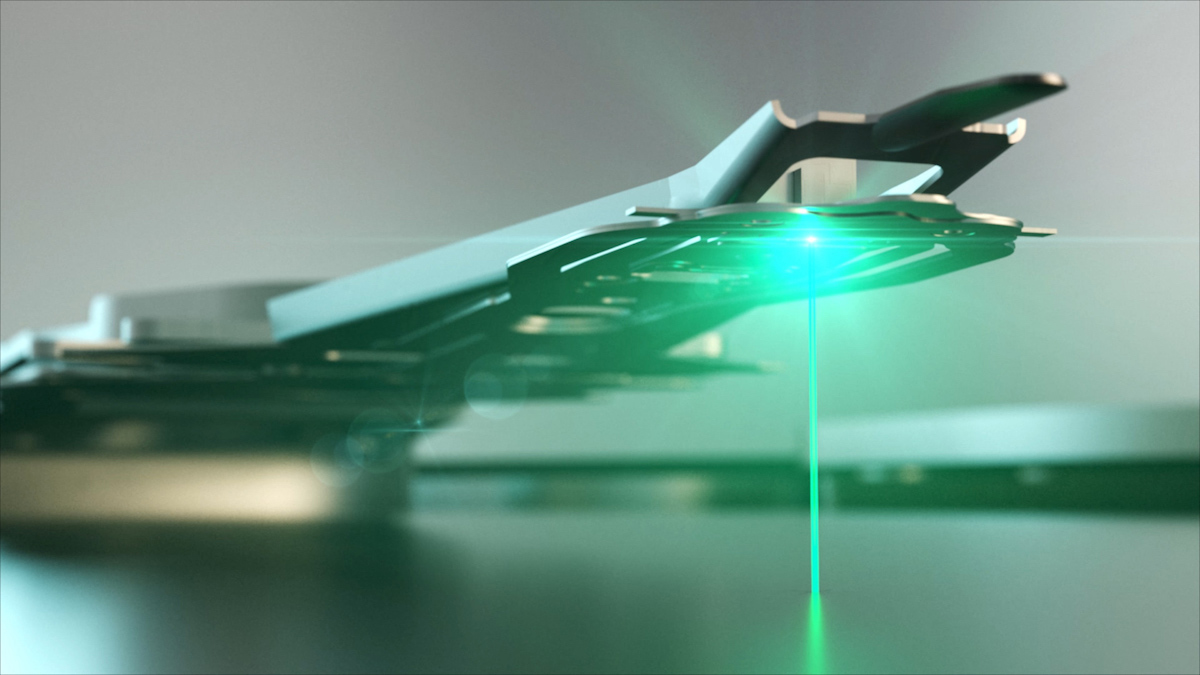Western Digital to unveil 44TB HAMR HDDs in 2026, 100TB in 2030
But not shipping in volume until 2027.

Western Digital this week outlined its future hard disk drive technology roadmap and revealed plans to adopt heat-assisted magnetic recording (HAMR) for its HDDs beginning in late 2026. HAMR will enable the company to build 80TB–100TB HDDs by 2030.
Western Digital's first HAMR-based HDDs will be introduced sometime in 2026, with a 36TB capacity for conventional magnetic recording (CMR) and a 44TB capacity for shingled UltraSMR recording. The company expects these drives to be qualified by its customers among cloud data center providers by late 2026, which is when Western Digital will begin its volume production. The company plans to commence volume shipments of its HAMR drives in the first half of 2027.
Right now, two CSPs are already test-driving Western Digital's HAMR-based HDDs, though the company declines to disclose their capacity and whether they are used in the CMR or SMR versions.

“The plan is to transition to HAMR, starting at 36TB with CMR recording technology, and 44TB with UltraSMR,” said Irving Tam, Chief Executive Officer of Western Digital, at the company's Investor Day 2025. “We anticipate that we will complete qualification for this HAMR product by the end of the calendar year 2026 and then transition to shipping in volume during the first half of 2027. It's not that we are just starting with HAMR today; we have been engaging with our customers on HAMR for quite a while now. [We] already have two hyperscale customers that are testing our HAMR drives today.”
Western Digital expects its HDDs featuring HAMR technology to evolve over the years. For now, the company envisions 80TB CMR HDDs and 100TB UltraSMR drives around 2030. That evolution will not be enabled by HAMR alone but also by the company's other technologies, including OptiNAND, an increased number of platters, and mechanical improvements. By the end of the decade, there will be HDDs that can store more than twice as much data as current hard drives.
It is worth noting that Western Digital's path to HAMR has been convoluted, to say the least. Energy-assisted magnetic recording has been discussed for years, but Seagate and Western Digital only began discussing its commercialization in the mid-2010s. While Seagate has been a strong supporter of HAMR, Western Digital publicly committed to microwave-assisted magnetic recording (MAMR) — which uses a spin torque oscillator to generate microwaves that reduce the magnetic coercivity of the write head's location to enable narrow and stable tracks — in 2017.
At some point, Western Digital realized that the energy produced by the spin torque oscillator was enough to change the magnetic coercivity of its media and decided to use this discovery to develop energy-assisted perpendicular magnetic recording (ePMR) technology for commercial products starting in 2019. By late 2021, the company ceased to mention MAMR. However, Western Digital then made significant advancements with its write heads and ultimately developed ePMR 2 technology, which enables the company's leading-edge 26TB CMR and 32TB UltraSMR HDDs.
Stay On the Cutting Edge: Get the Tom's Hardware Newsletter
Get Tom's Hardware's best news and in-depth reviews, straight to your inbox.
Now that the company has set launch and volume production windows for its HAMR-based HDDs, it's likely safe to say that MAMR will never materialize, and HAMR will be Western Digital's future.

Anton Shilov is a contributing writer at Tom’s Hardware. Over the past couple of decades, he has covered everything from CPUs and GPUs to supercomputers and from modern process technologies and latest fab tools to high-tech industry trends.
-
t3t4 Finally some good news for a change. Recently purchased a 28TB from Seagate but wish it was 40+..... This HAMR scares me, but I'm willing to give a try. At a certain point I won't have a choice but to try it, video takes up soooo much space!Reply